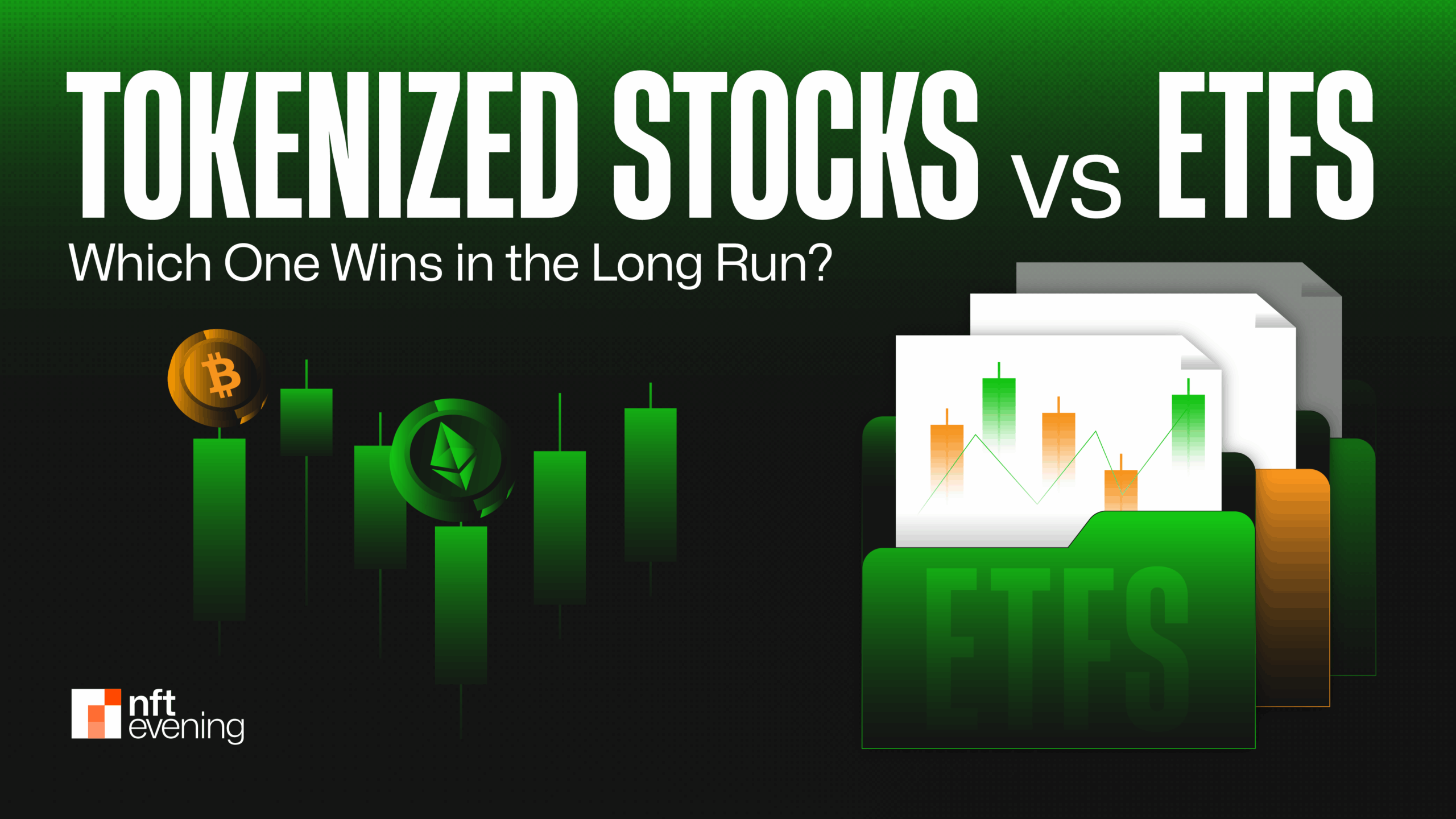Long-Term Success: Which Strategy Wins in Business and Life?

Tokenized Stocks vs. ETFs: The Future of Investment Instruments
As the financial landscape evolves, the emergence of tokenized stocks is sparking discussions about their potential advantages over traditional exchange-traded funds (ETFs). While ETFs have been the preferred choice for investors seeking passive equity exposure, tokenized stocks present a blockchain-based alternative that offers unique benefits such as flexibility, composability, and around-the-clock trading.
- Understanding ETFs: A Regulated and Liquid Investment Option
- Tokenized Stocks: A New Era of Financial Flexibility
- Comparative Analysis: xStocks by Backed vs. BlackRock ETFs
- The Convergence of Traditional and Tokenized Finance
- Future Outlook: Parallel Paths for ETFs and Tokenized Stocks
- Conclusion: A Blended Future for Investment Instruments
Understanding ETFs: A Regulated and Liquid Investment Option
Exchange-Traded Funds have gained recognition as one of the most effective financial products in recent years, providing investors with diversified access to various asset classes, including equities, bonds, and commodities, all while ensuring daily liquidity and regulatory compliance.
In the United States, ETFs are governed by the Investment Company Act of 1940, mandating daily disclosure of holdings, audited financial statements, and adherence to strict risk management protocols. Industry leaders like BlackRock’s iShares manage over $3.3 trillion in global ETF assets as of mid-2025, offering a wide range of sector-specific, country-focused, and thematic funds.
These funds are traded on major exchanges such as NASDAQ and NYSE, making them accessible to both retail and institutional investors through standard brokerage accounts. Their established regulatory framework, familiarity, and tax-efficient structure make them appealing to traditional investors. However, ETFs are limited to trading hours and often incur management fees.
While ETFs provide regulatory assurance and robust investor protection, they are constrained by traditional financial systems, lack composability, and do not offer real-time settlement. Investors in BlackRock ETFs must rely on custodians and intermediaries, limiting their ability to utilize shares in decentralized finance (DeFi) applications or access them outside of market hours—an important consideration as financial systems increasingly move on-chain.
Tokenized Stocks: A New Era of Financial Flexibility
Tokenized stocks represent a groundbreaking financial innovation, allowing equities to be mirrored or wrapped on blockchain networks. This enables decentralized trading that operates continuously without the need for intermediaries. Typically, these assets are backed 1:1 by actual shares held in custody, with the tokens serving as tradable representations on-chain. Initiatives like Backed Finance’s xStocks have pioneered this space, offering over 60 tokenized versions of popular U.S. equities on platforms like Ethereum and Avalanche.
Unlike ETFs, xStocks can be traded permissionlessly on decentralized exchanges (DEXs), utilized as collateral in lending protocols, or integrated into smart contracts. This grants them a level of financial flexibility and programmability that traditional ETFs lack. However, tokenized stocks often exist in a regulatory gray area. While Backed Finance operates under Swiss law and adheres to frameworks aligned with the European Markets in Crypto-Assets (MiCA) regulation, these products are generally not available to U.S. investors and depend on offshore structures.
Liquidity remains a challenge, with daily trading volumes for tokenized equities averaging between $100,000 and $300,000—significantly lower than ETF benchmarks—often spread across various decentralized finance platforms like Uniswap or Curve. Nevertheless, their ability to trade 24/7, quick settlement times, and integration with DeFi present a glimpse into a more adaptable financial future. Essentially, tokenized stocks sacrifice regulatory clarity for open access and composability, making them an attractive option for crypto-savvy investors.
Comparative Analysis: xStocks by Backed vs. BlackRock ETFs
In the quest to modernize equity exposure, xStocks by Backed Finance and BlackRock ETFs embody two fundamentally different approaches: one entrenched in traditional finance and regulation, the other at the forefront of programmable, on-chain assets.
BlackRock, the largest asset manager globally, operates within a well-defined regulatory framework for ETFs. Their offerings, such as the iShares Core S&P 500 ETF (IVV) and iShares MSCI Emerging Markets ETF (EEM), are backed by tangible assets, traded on centralized exchanges, and accessible to a broad range of brokerage clients worldwide. These ETFs benefit from decades of regulatory clarity, substantial liquidity, and seamless integration into the global financial ecosystem.
For instance, IVV alone experiences an average daily trading volume exceeding $1.2 billion, making ETFs a cost-effective option for institutional investors seeking index exposure. However, they are limited to trading during stock market hours, cannot be utilized within DeFi, and rely on centralized custodians.
Conversely, xStocks by Backed Finance tokenize real-world equities like Apple (bAAPL), Tesla (bTSLA), and NVIDIA (bNVDA) on public blockchains such as Ethereum, Avalanche, and Base. Each xStock is backed 1:1 by the underlying share, held in custody by a regulated Swiss trustee. These tokens can be traded 24/7 on decentralized platforms, used as collateral, and integrated into smart contracts—capabilities that BlackRock’s ETFs do not offer.
xStocks open up new financial opportunities, such as yield farming with equities, composable lending markets, and automated tokenized portfolios. However, they are currently only available to non-U.S. users, and their trading volumes are modest, typically ranging from $50,000 to $300,000 daily, with limited liquidity compared to ETFs. Additionally, because they are not listed on centralized exchanges, their price discovery relies on decentralized market makers or DEX aggregators.
The distinction between these two approaches goes beyond mere accessibility; it reflects a broader vision for the future of finance. BlackRock ETFs represent a structured, institution-first model with clear regulations, while xStocks embody a decentralized, code-driven vision of capital markets that are open, composable, and perpetually active—albeit still navigating regulatory uncertainties and early adoption challenges.
This divergence highlights a macro shift from traditional, paper-based finance to programmable finance. If tokenized equities like xStocks can enhance liquidity, achieve regulatory compliance (such as under Europe’s MiCA), and integrate with identity and compliance layers (like zkKYC or smart whitelists), they could begin to rival ETFs in both adoption and versatility. Platforms like Kraken, Republic, and Robinhood EU are already exploring similar tokenized offerings, indicating that even traditional finance players are closely monitoring this emerging frontier.
The Convergence of Traditional and Tokenized Finance
Interestingly, both ETFs and tokenized stocks are evolving. Traditional ETF issuers, such as Franklin Templeton and WisdomTree, are exploring the tokenization of ETFs, issuing fund shares on blockchain infrastructure.
Simultaneously, tokenized stock issuers are adopting ETF-like features, including wrapped products, risk disclosures, redemption mechanics, and asset baskets. This convergence is taking place, but the underlying philosophies differ:
- ETFs on-chain: Regulated structures with blockchain integration.
- Tokenized stocks: Native digital assets reimagining equity distribution and composability.
This hybrid future may allow for the coexistence—and even collaboration—of BlackRock ETFs and xStocks, depending on regulatory alignment and infrastructure development.
Future Outlook: Parallel Paths for ETFs and Tokenized Stocks
Predicting a definitive winner in this evolving landscape is challenging. Both investment vehicles are likely to thrive alongside each other:
- ETFs will continue to dominate in regulated environments, pensions, and wealth management sectors.
- Tokenized stocks will prosper in crypto-friendly jurisdictions, borderless capital markets, and programmable finance ecosystems.
However, the trajectory of innovation appears to favor tokenized models:
- DeFi-native traders are gravitating toward flexibility and composability.
- Institutions are gradually becoming more receptive to tokenized real-world assets.
- Retail investors are seeking fractional, global, and always-on access to investments.
As legal frameworks evolve and infrastructure matures, tokenized stocks could surpass ETFs in use cases that extend beyond passive exposure—especially in areas where autonomy, speed, and interoperability are paramount.
Conclusion: A Blended Future for Investment Instruments
ETFs and tokenized stocks represent two distinct visions for the future of investing. One is anchored in established compliance and scalability, while the other is built on the principles of decentralization, programmability, and inclusivity. Ultimately, the future may not favor one over the other, but rather a blended model where tokenized financial instruments harness the strengths of both worlds. As investor behavior shifts and Web3-native assets gain legitimacy, tokenized stocks are well-positioned to challenge and potentially redefine the landscape of global equity markets.







